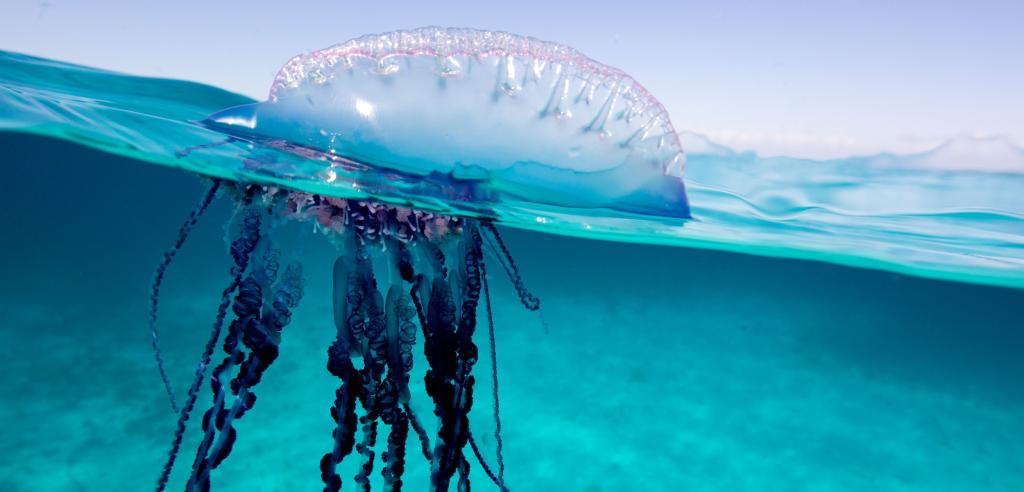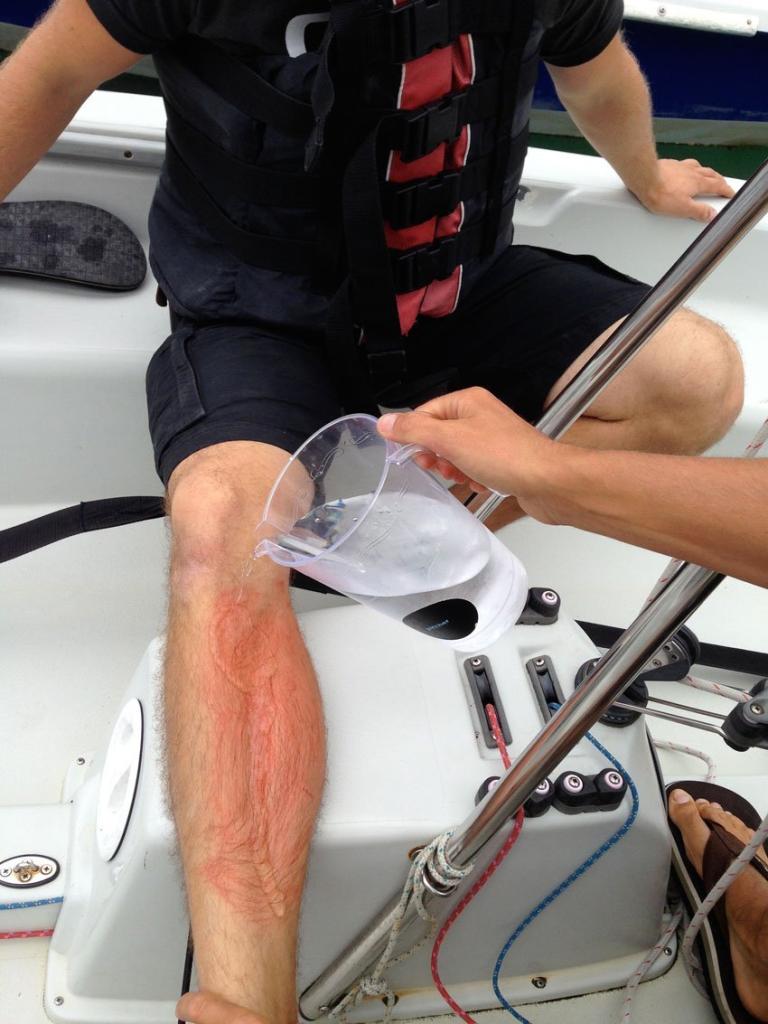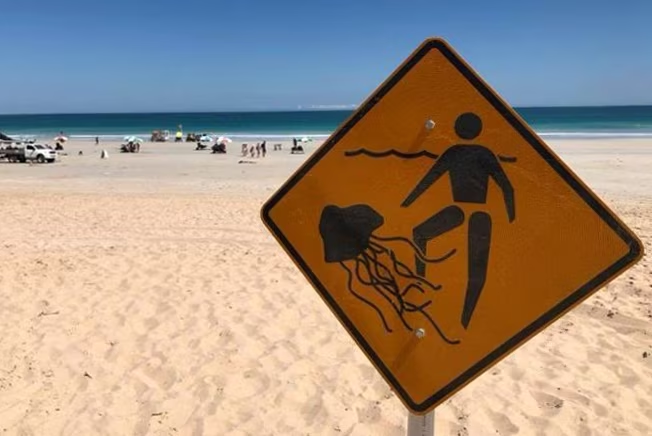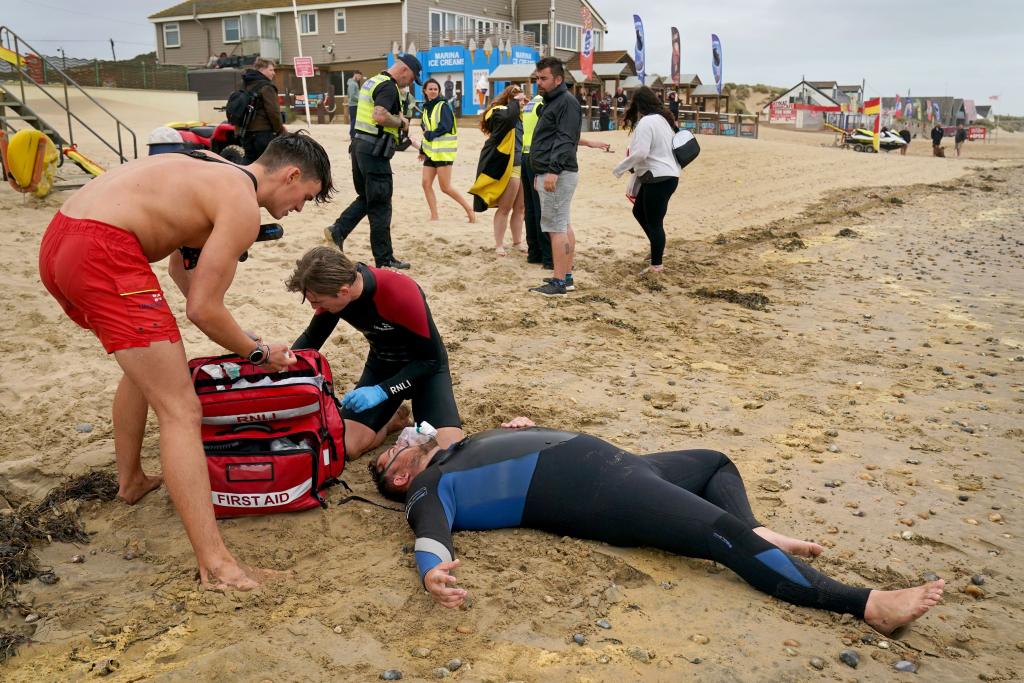
- First Aid
- Prevention
- Severe Symptoms
You’re having a lovely day at the beach, the sun is shining, the waves are softly lapping at your feet, and suddenly – pain! A quick searing sting on your skin reminds you that you’re sharing the ocean with some unfriendly critters. Yes, you have been stung by a jellyfish. But do not worry! Although a jellyfish sting might be unpleasant, it typically isn’t life-threatening, and with the proper care, you can treat it efficiently. Here’s how to treat a jellyfish sting like a pro.
First Aid: Rinse, Remove, Soak

Typically there are three steps recommended for first aid treatment for a jellyfish sting:
- Rinse: Rinse the affected area with vinegar. The acetic acid in vinegar helps to neutralize the venom from the jellyfish stings. If you don’t have vinegar on hand, rinse with seawater (not freshwater), which can help prevent the stingers from releasing more venom.
- Remove Tentacles: It is recommended that any visible tentacles be removed. Use a pair of tweezers or a gloved hand. Avoid using bare hands, as you run the risk of getting stung again.
- Soak in Hot Water: After you’ve removed the tentacles, soak the affected area in hot water (as hot as you can tolerate without burning your skin) for about 20 to 45 minutes. The heat can help reduce pain and deactivate the venom. You can also use ice packs to reduce swelling.
Prevention: Tips for Avoiding Jellyfish Stings

While there are fast remedies for jellyfish stings, prevention remains the best cure. Here are a few tips to help keep you safe:
- Check for Jellyfish Activity: To guard yourself from jellyfish stings, learn about the local jellyfish population. Ask lifeguards or locals about recent sightings and familiarize yourself with the various types of jellyfish in the area. Understand the risks associated with different species. Additionally, watch for beach signs, as they may display jellyfish warnings.
- Wear Protective Gear: Choose wetsuits or special skinsuits designed to prevent jellyfish. You can obtain them online or at a local dive shop.
- Jellyfish Repellent: Consider applying a jellyfish repellant for extra protection. These products specifically keep jellyfish from contacting your skin. While not always 100% sting-proof, they can add an extra layer of protection. Make sure you select an eco-friendly product and properly follow the application directions.
- Stay Away: Avoid jellyfish, even if they appear to be deceased. Even dead jellyfish carry toxins in their tentacles and can harm you if they come into contact with you.
Severe Symptoms

According to VeryWellHealth.com, there are several indications that your sting may be more severe than usual. The symptoms can vary depending on the type of jellyfish encountered. If you experience any of these symptoms to a severe degree, you should seek medical attention immediately. These symptoms might include:
- Intense pain and a burning sensation at the sting site
- Large welts or rashes on the skin
- Severe itching and swelling
- Nausea and vomiting
- Difficulty breathing
- Muscle pain and spasms
- Weakness and fatigue
- Dizziness or confusion
- Rapid or irregular heartbeat
- Loss of consciousness
Treating jellyfish stings promptly can mitigate pain and prevent more serious health issues. Whether dealing with a mild sting or a severe reaction, knowing the right steps to take can ensure a smoother recovery. Simple measures like using vinegar and applying heat can help, but seeking professional medical care is crucial for more severe symptoms. Educating yourself on jellyfish sting treatments allows for a safer and more confident approach to enjoying the ocean.
Are there any over-the-counter products that can help with jellyfish stings?
Yes, there are over-the-counter products available that can help alleviate symptoms of jellyfish stings. Topical pain relievers like hydrocortisone cream or antihistamine creams can help reduce itching and swelling. Commercially available jellyfish sting lotions or sprays may also provide relief. However, these should be used in conjunction with the initial first aid steps.
Can I use urine to treat a jellyfish sting?
No, using urine to treat a jellyfish sting is a myth and not recommended. Urine may actually exacerbate the sting by causing the release of more venom. Instead, rinse the area with vinegar or saltwater, remove tentacles, and apply heat to reduce pain.
What long-term effects can jellyfish stings have?
Most jellyfish stings heal without long-term effects. However, some stings can cause lingering pain, scarring, or allergic reactions. If symptoms persist, consult a healthcare professional.

